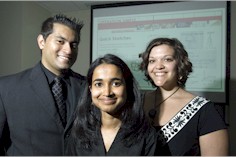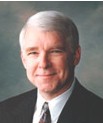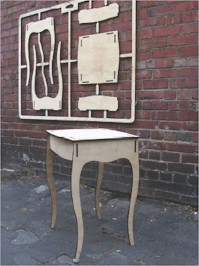|
Seule
Kabir grew up in what she describes as an
"upper middle-class family" in Dhaka, the
capital city of Bangladesh. Her brother moved to
Blacksburg to study engineering at Virginia Tech,
and she followed him to the Old Dominion. Today she
is a graduate student in the Virginia Commonwealth
University School of Engineering, focusing her
studies on the design of medical
equipment.
Despite
prospects for a lucrative career designing high-tech
medical equipment, Kabir is deeply moved by the
poverty of her fellow Bangladeshis. Life
expectancies in her home country are among the
lowest in the world, and most people lack the means to pay for basic health care, much less
world-class medical technology.
Thanks
to the da Vinci Center for
Innovation in Product Design and Development, an interdisciplinary program
that combines engineering, business and design to
stimulate creativity in product development, Kabir
has an opportunity to make a difference to millions
of poor people in Bangladesh and the developing
world. In a project dubbed "Operation Simple,"
she and two other VCU students
conceptualized an approach for manufacturing and
shipping extremely low-cost surgical beds to
under-funded hospitals and clinics in Third World
countries. The project has been deemed promising
enough to warrant continued investment of da Vinci
Center resources to develop the idea more fully in
the hope that it can one day be commercialized.
A
standard operating table in the United States costs
$40,000. An operating table in Bangladesh can run
between $14,000 and $30,000 depending on whether the
hospital can spring for a Western model or has to
settle for a cheaper Chinese version, about $5,000.
Even at that price, most hospitals in the South
Asian country can afford only one, which limits the
productivity of another scarce commodity in rural
clinics: trained surgeons.
The
audacious goal of the three-person da Vinci Center
team -- which also included business
grad student Hitesh Patel and interior designer
Jennifer Farris -- was to bring down the price of
manufacturing and shipping an operating table down
to $500. The only way they could possibly succeed
was to approach the problem in a radically different
way. The solution to a seemingly intractable challenge required creative thinking.
|

|
da
Vinci team members of "Operation
Simple" (from left): Hitesh Patel, Seule
Kabir and Jennifer Farris |
The
premise behind the da Vinci Center, explains Russell
Jamison, dean of the Engineering School, is that the
most effective way to develop new
products is to bring three key disciplines -- engineering, design and
business -- to bear at the same time.
Traditionally, the work has been compartmentalized, with
each group kicking the job over the wall to the
next. The product innovation cycle takes longer that
way, and it's more prone to suffer from
tunnel-vision thinking that inhibits big
breakthroughs. By contrast, the da Vinci Center unites the
disciplines of engineering, business and design from
the inception of a project.
Disruptive
innovation tends to come at "the
intersection," to borrow a phrase from Frans
Johansson, author of "The Medici Effect."
When people with very different perspectives come
together -- whether those perspectives are born of
deeply bedded cultural assumptions or methods
ingrained by academic disciplines -- they are far
more likely to generate outside-the-box ideas. That
insight is an organizing principle at VCU, as
manifested in
the decision to build the new business school and
engineering school buildings next door to one
another and to have the faculties collaborate in
developing a partially shared curriculum.
The da Vinci Center takes that thinking another step
forward.
|

Jamison
|
Before
coming to VCU two years ago, Jamison ran a
multi-disciplinary program at the University of Illinois at
Urbana-Champagne that combined
business and engineering. One of the
exciting aspects of moving to Richmond
was
the opportunity to launch the interdisciplinary da
Vinci Center, which combined not two but three
disciplines, adding design to the mix.
|
The
interdisciplinary ideal was the leitmotif behind
locating the new business school and engineering
schools side by side on the newly constructed Monroe
campus. But simply placing the two schools together
would not create collaboration, says Jamison.
"Physical adjacency isn't enough. The schools
need intellectual adjacency." Developing a
shared curriculum as one way to create that
adjacency. Another was creating interdisciplinary
projects for students to work on. That's where the da Vinci
Center came in.
Located
in the engineering school, the
Center runs on a "shoestring," Jamison
says, supported
financially and programmatically by all three schools
and seven corporate sponsors in the Richmond region.
In
an evolution beyond the business- engineering program at
the University of Illinois, da Vinci incorporates the strengths of
VCU's highly regarded school of the arts. As anyone
familiar with iPod or iPhone knows, design is a
critical component of successful product development,
not an element to be tacked onto the end of the
process.
"Operation
Simple" was atypical in that it was sponsored by the da Vinci Center
itself rather
than a corporate sponsor. While it's possible
that a corporation might adopt a solution
conceived by VCU's students, the real value
proposition is recruiting, Jamison says. The
sponsorships run $30,000 a year. For that
investment, Philip Morris USA, MeadWestvaco, Alpha
Laval, Hamilton Beach and the Commonwealth of
Virginia, hope to develop a stream of students who have
mastered not only their academic disciplines but the
art of product development. Hiring VCU students with
the kind of project experience that da Vinci
provides saves tens of thousands of dollars in
on-the-job training.
The
program still needs tweaking, though, Jamison
concedes. "We're
doing everything for the first time," and there's still a lot to figure out. The
Center hasn't even hired a full-time director yet.
Now that the initiative has run several projects back
to back, it's time to re-think and re-calibrate,
Jamison says.
Don't
take the pause as a sign of diminished enthusiasm,
however. "Operation Simple" demonstrates the kind
of creativity that the da Vinci Center can elicit
from students, and it's a showcase for VCU
achievements.
|

|
Kabir's
team made two conceptual breakthroughs that may
make it possible to achieve the outlandish goal of
cutting production and distribution expenses by a
factor of 10. The first "da Vinci moment"
was the discovery of a strategem employed in the
furniture industry: flat pack manufacturing, in
which key components are laser-cut from a sheet of
material. Flat packing
allows the sheets to be stacked and shipped
|
very
efficiently; the components can be easily removed
and assembled on site.
The
second da Vinci moment came from the discovery that
the key mechanical components of the operating table
-- hydraulic lifts, gimbals and pawl & ratchet
hinges -- are manufactured inexpensively en masse
for consumer products such as auto repair kits and
lawn chairs. If those components could be adapted to
the operating table, the cost of materials could be
reduced to an astounding $60!
Phase
one, which delineates the concept, is complete.
Phase Two will produce drawings that show
precisely, among other things, how lawn chair rackets can be transformed
into articulating joints for an adjustable operating
table and how a hydraulic car jack can be adapted
into a hand-powered lifting mechanism.
There
are many other questions to address, says Mike Troy, a
consultant for Stryker Communications, a Dallas,
Tex.-based designer of operating tables, who
traveled to Richmond to see the VCU team's
presentation. Quality control is a critical issue if
people are going to be assembling the pieces on
site. "You can't have the bed collapsing with
patients on it!"
Troy
also questions the team's notion that manufacture of
the bed can be outsourced to China. "China
sounds great, but you have a lot of trouble with
process and quality control." And there's also
the risk of outright theft of intellectual property.
Mexico might make a better manufacturing platform,
he suggests.
As
for Seule, she would be thrilled to see the $500
operating table become a reality. One of her life goals life is to
make health care affordable for more people. "I am
learning about medical equipment and bone implant
design and manufacturing" in her studies, she
says. "I would like to make them more efficient and inexpensive."
While
it would be a tremendous coup if VCU students could
build on the work of Seule and her teammates and
ultimately supply inexpensive operating tables to
the Third World, the success of "Operation
Simple" is not contingent upon commercialization -- a
formidably high bar to set. As one professor told
the students after their presentation, "This is
not just about the table. It's about learning how to
solve problems."
--
May 19, 2008
|
